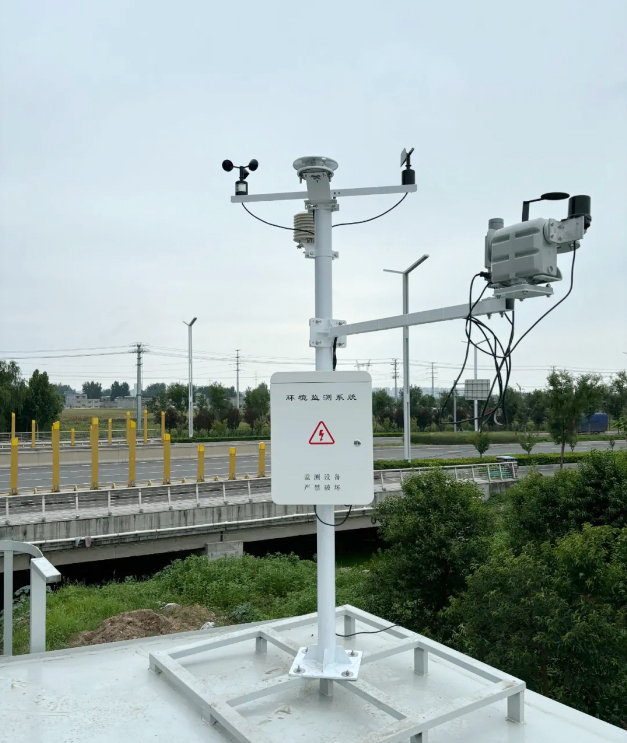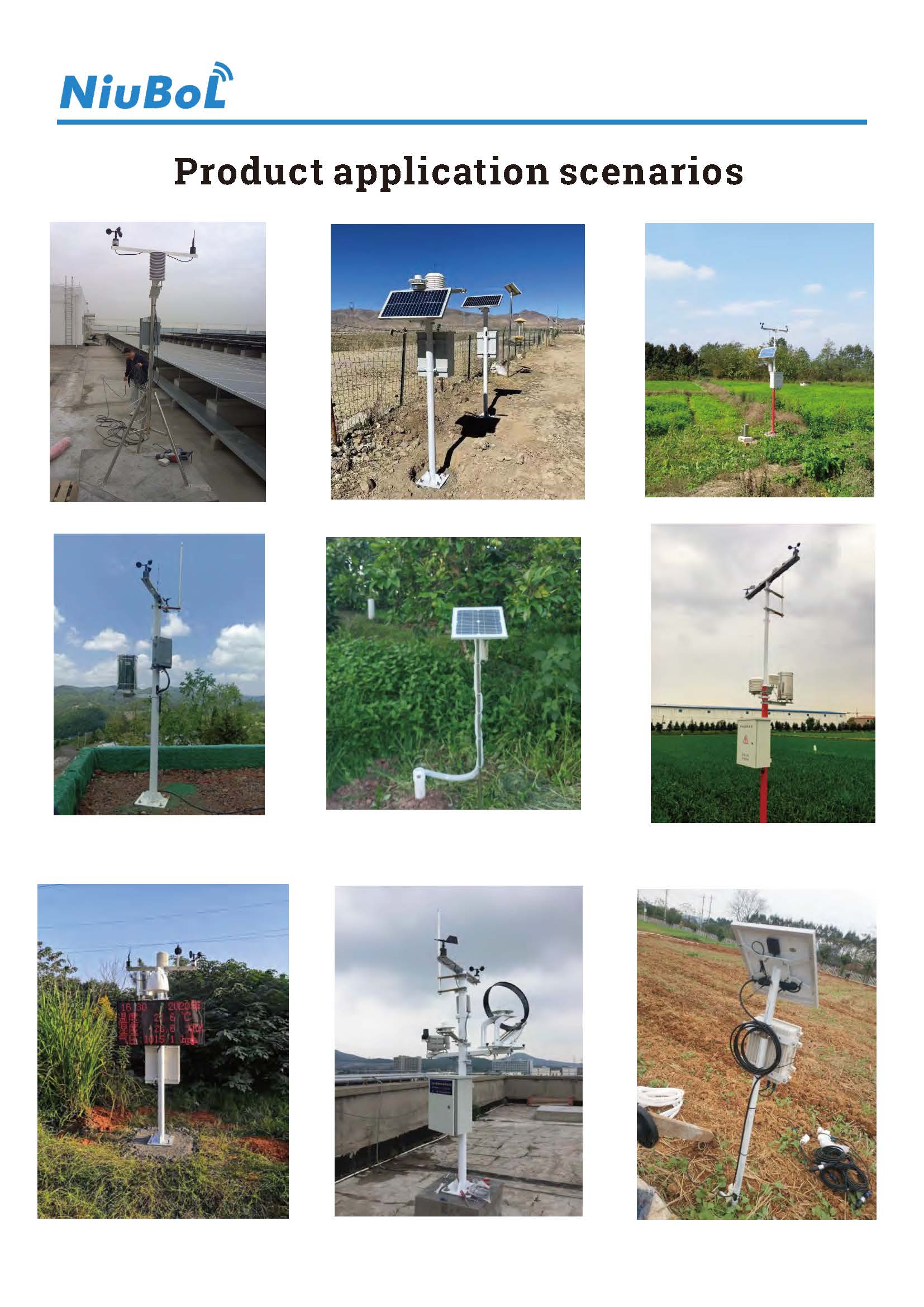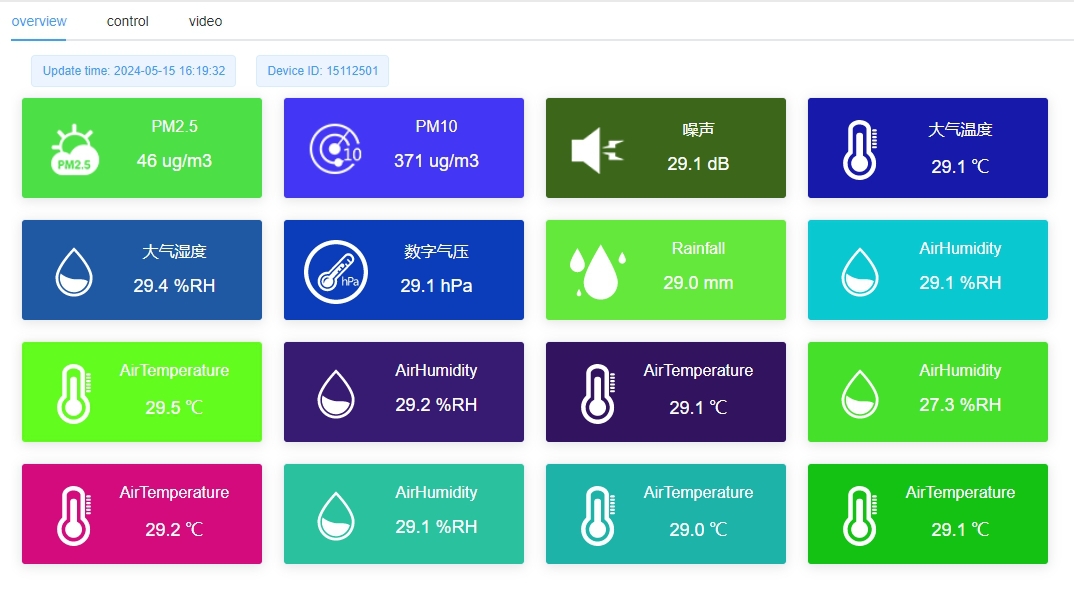

— Blogs —
—Products—
 Consumer hotline +8618073152920
Consumer hotline +8618073152920 WhatsApp:+8615367865107
Address:Room 102, District D, Houhu Industrial Park, Yuelu District, Changsha City, Hunan Province, China
Product knowledge
Time:2025-04-09 11:00:20 Popularity:36
In the field of meteorological monitoring, efficiency and accuracy are key to ensuring the value of data. With continuous technological advancements, automatic weather stations, with their intelligent and unmanned characteristics, have become essential tools for improving monitoring efficiency. These devices can not only collect a variety of meteorological parameters in real time, but also transmit and process data quickly, providing reliable support for weather forecasting, disaster warnings, and scientific research. This article will explore in detail the working principles, advantages, and ways to further optimize the efficiency of automatic weather stations, helping customers understand the role of this technology in modern meteorological monitoring.
An automatic weather station is a device that integrates high-precision sensors, a data processing unit, and communication technology, designed for all-weather monitoring of outdoor meteorological conditions. It can automatically measure key parameters such as temperature, humidity, atmospheric pressure, wind speed, wind direction, precipitation, and solar radiation, and record and transmit data in real time to a cloud platform or local system. Compared with traditional manual observation, an automatic weather station operates without human intervention, significantly improving monitoring continuity and efficiency.
- Sensors: Responsible for collecting raw meteorological data, with the ability to withstand harsh weather conditions.
- Data processing unit: Processes and analyzes sensor data to ensure accurate output.
- Communication module: Transmits data to remote platforms via wireless technologies (such as 4G/5G/Lorawan or satellite communication).
- Power supply system: Supports solar or battery power to adapt to various environments.
Automatic weather stations are widely used in weather forecasting, agricultural management, environmental monitoring, and traffic safety, and are a core component of modern meteorological observation networks.

Through technological innovations and intelligent design, automatic weather stations significantly improve meteorological monitoring efficiency in several aspects:
Automatic weather stations can collect data every second or minute and upload it to the cloud platform in real time via wireless networks. This immediacy eliminates the delays of manual observations, ensuring users can quickly access the latest meteorological information. For instance, during a storm, wind speed and rainfall data can be transmitted immediately to relevant departments, speeding up the warning and response time.
Traditional meteorological observations rely on manual recording, which is often limited by time and human resources. Automatic weather stations operate around the clock without the need for onsite personnel, reducing labor costs, eliminating human errors, and ensuring data consistency and reliability.
By integrating various sensors, automatic weather stations can simultaneously monitor multiple meteorological elements. This integration reduces the need for multiple single-purpose devices, improving both monitoring comprehensiveness and efficiency. For example, a single station can provide temperature, humidity, and wind speed data, offering a complete basis for agricultural or traffic decision-making.
The built-in data processing unit can perform preliminary analysis on raw data, generating reports or charts that are easy to understand. Data is shared via cloud platforms, allowing users to access it anytime and anywhere, greatly enhancing the efficiency of information utilization.
Although automatic weather stations have significantly improved monitoring efficiency, their performance can be further optimized through the following measures:
The accuracy of sensors directly impacts data quality. By adopting more advanced sensors (such as ultrasonic anemometers or optical rain gauges) and optimizing data processing algorithms, measurement resolution and reliability can be improved. For instance, improved optical sensors can more accurately detect rainfall in low-visibility conditions.
Automatic weather stations are often deployed outdoors and face challenges such as wind, rain, and extreme temperatures. Regular maintenance (such as cleaning sensors and checking power supplies) and using corrosion-resistant materials (such as stainless steel or high-strength plastics) for equipment construction can ensure long-term stable operation in harsh environments and reduce downtime.
To ensure data credibility, automatic calibration mechanisms can be introduced. For example, the system can compare readings from multiple sensors, identify anomalies, and automatically correct them. Additionally, regularly comparing with standard meteorological station data helps maintain monitoring consistency.
In remote areas, communication signals may be unstable. Upgrading to more powerful transmission technologies (such as satellite communication) or adding relay stations can ensure uninterrupted data transmission and improve monitoring efficiency in remote regions.
By combining artificial intelligence and machine learning, automatic weather stations can predict short-term weather trends or automatically adjust their operating modes. For example, when strong winds are detected, the system can reduce power consumption to protect the battery, thereby extending the service life.

By monitoring real-time wind speed, rainfall, and atmospheric pressure changes, automatic weather stations provide early warnings for storms, floods, or typhoons. For instance, in coastal areas, updated data helps governments evacuate residents in time to reduce damage.
Farmers use automatic weather stations to monitor field temperature and humidity, enabling precise irrigation and fertilization scheduling. For example, during drought seasons, the data helps determine when to increase water levels; during rainy seasons, it guides drainage efforts. This precise management improves crop yields and reduces resource waste.
On highways or at airports, automatic weather stations provide wind speed and rainfall information to ensure road and flight safety. For instance, when strong crosswinds are detected, airports can adjust takeoff and landing schedules to prevent accidents.
Automatic weather stations that operate for extended periods accumulate large amounts of data, which scientists can analyze to study climate change trends and inform policy decisions. For example, detected temperature rise trends could promote energy-saving and emission-reduction measures.

With ongoing technological advancements, the functions of automatic weather stations will continue to expand. Future devices may integrate more environmental parameters (such as air quality or soil moisture), providing more comprehensive data support. Additionally, low-power designs and renewable energy power sources will make them more suitable for deployment in remote areas. By incorporating Internet of Things (IoT) technology, automatic weather stations could link up with other intelligent systems to form a more extensive meteorological monitoring network.

With their high efficiency, accuracy, and unmanned operation, automatic weather stations have revolutionized traditional meteorological monitoring methods. From real-time data collection to disaster warnings, they provide strong support for weather forecasting, agricultural production, and traffic safety. By continuously optimizing sensor precision, equipment durability, and data processing capabilities, the efficiency of automatic weather stations will continue to improve. For customers seeking efficient monitoring solutions, this technology not only enhances the speed and quality of data acquisition but also offers a reliable tool for addressing climate challenges. As applications continue to expand, automatic weather stations will play an increasingly larger role in global meteorology.
Related recommendations
Sensors & Weather Stations Catalog
Agriculture Sensors and Weather Stations Catalog-NiuBoL.pdf
Weather Stations Catalog-NiuBoL.pdf
Related products
 Combined air temperature and relative humidity sensor
Combined air temperature and relative humidity sensor Soil Moisture Temperature sensor for irrigation
Soil Moisture Temperature sensor for irrigation Soil pH sensor RS485 soil Testing instrument soil ph meter for agriculture
Soil pH sensor RS485 soil Testing instrument soil ph meter for agriculture Wind Speed sensor Output Modbus/RS485/Analog/0-5V/4-20mA
Wind Speed sensor Output Modbus/RS485/Analog/0-5V/4-20mA Tipping bucket rain gauge for weather monitoring auto rainfall sensor RS485/Outdoor/stainless steel
Tipping bucket rain gauge for weather monitoring auto rainfall sensor RS485/Outdoor/stainless steel Pyranometer Solar Radiation Sensor 4-20mA/RS485
Pyranometer Solar Radiation Sensor 4-20mA/RS485
Screenshot, WhatsApp to identify the QR code
WhatsApp number:+8615367865107
(Click on WhatsApp to copy and add friends)